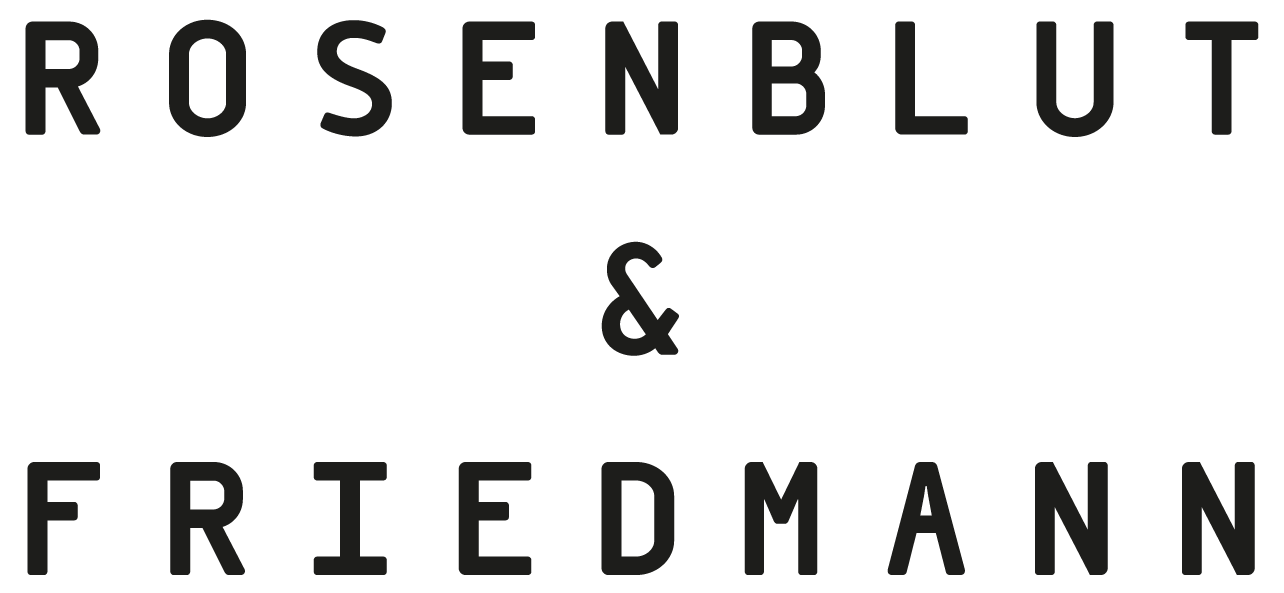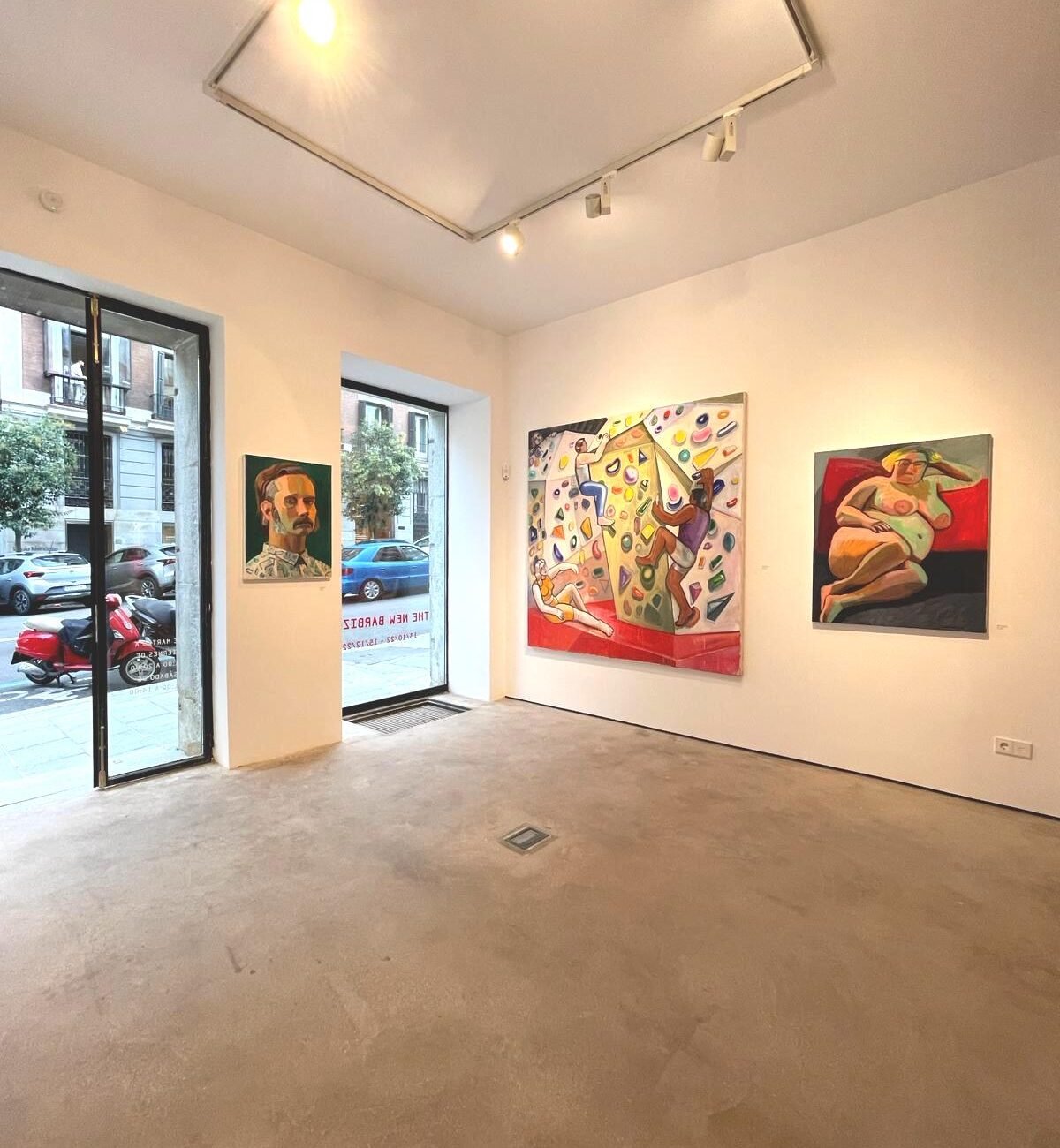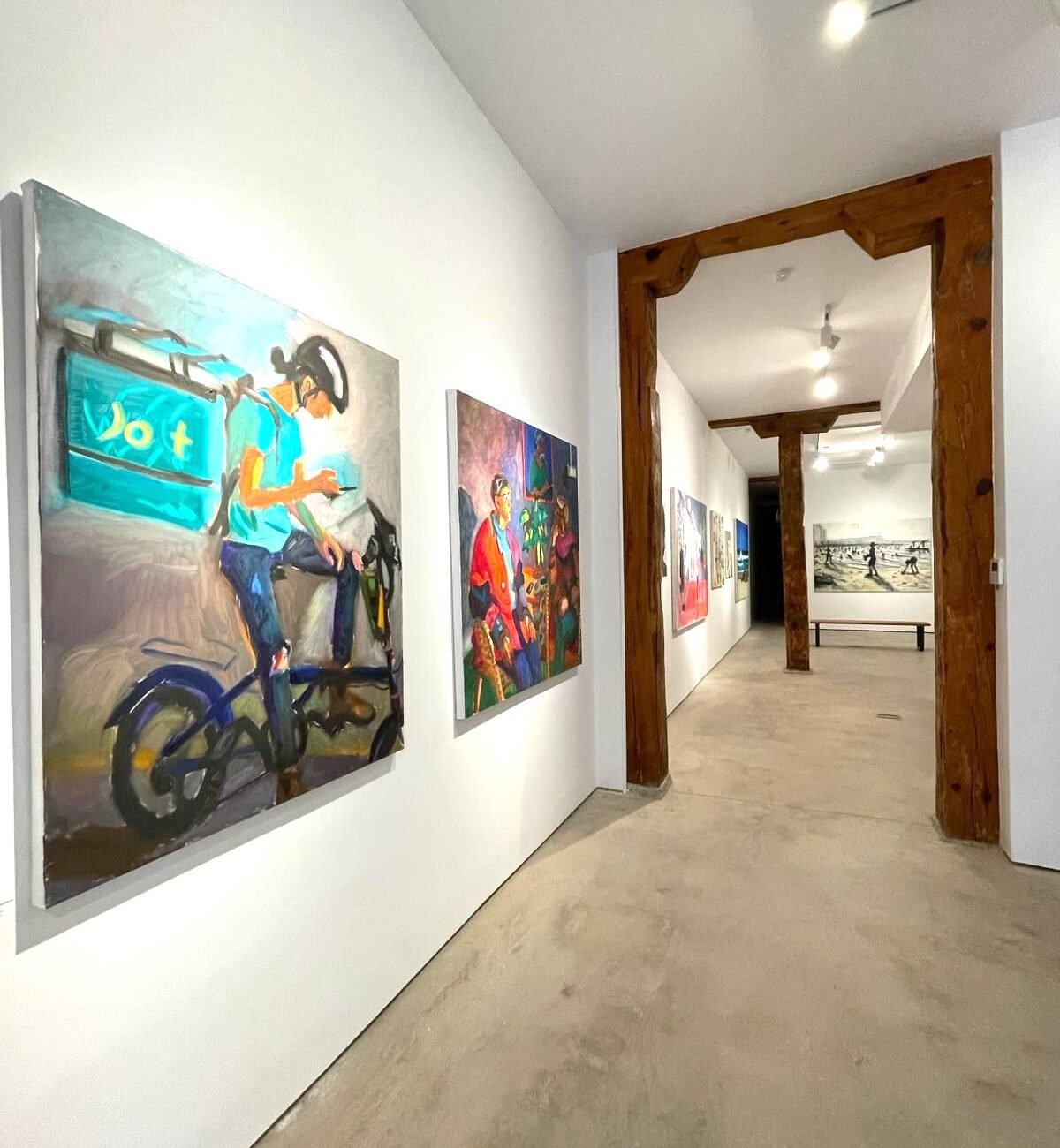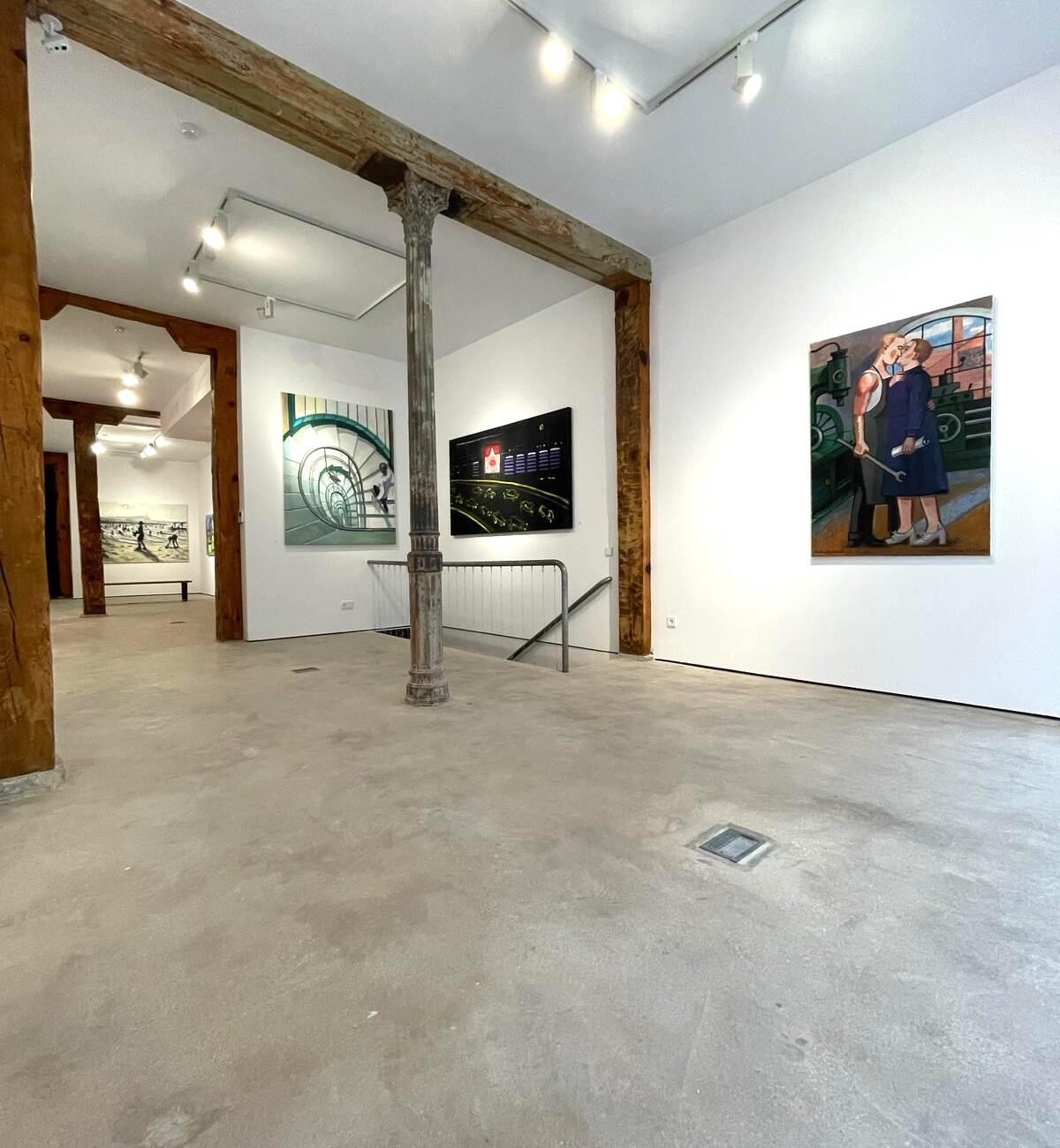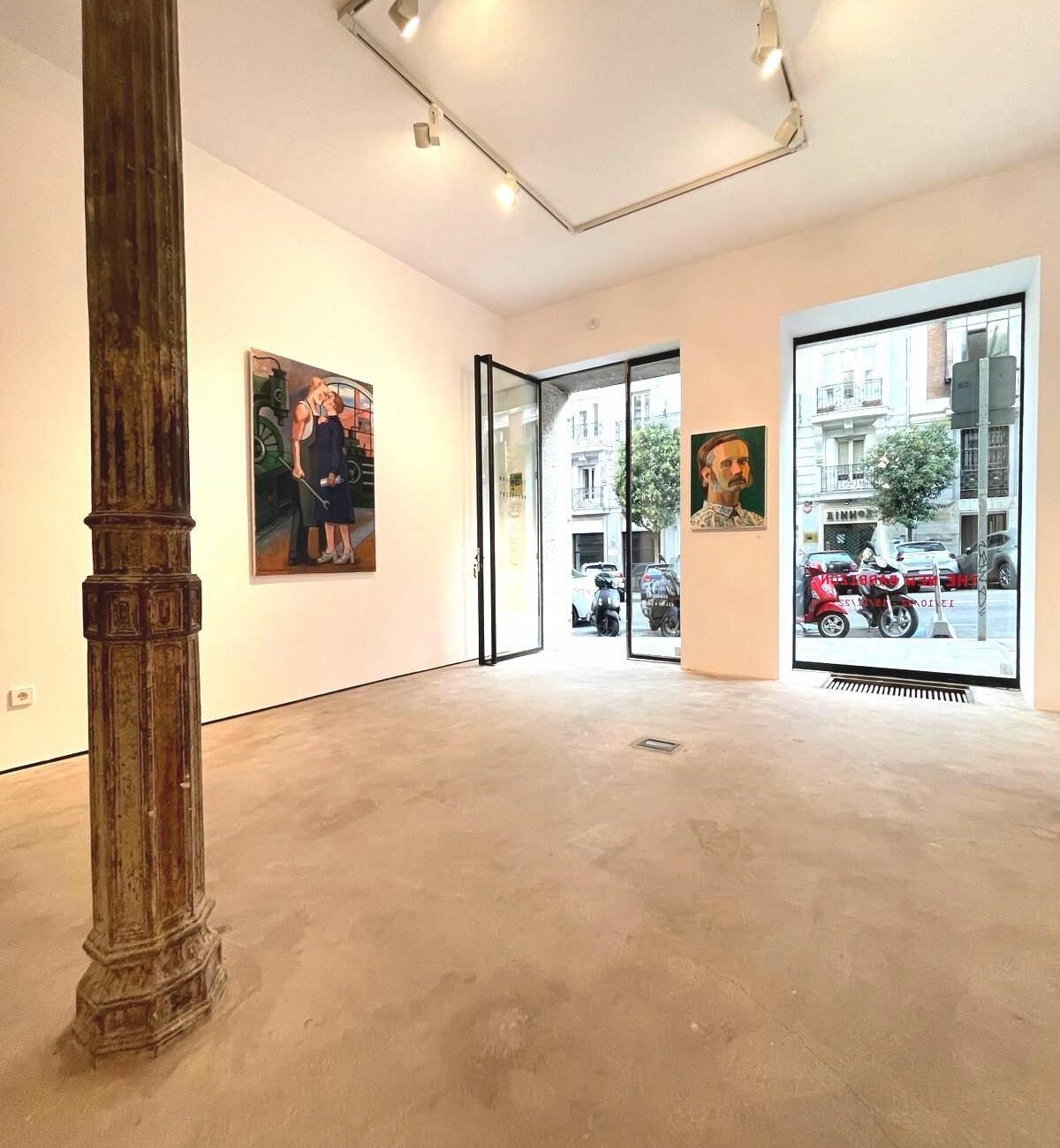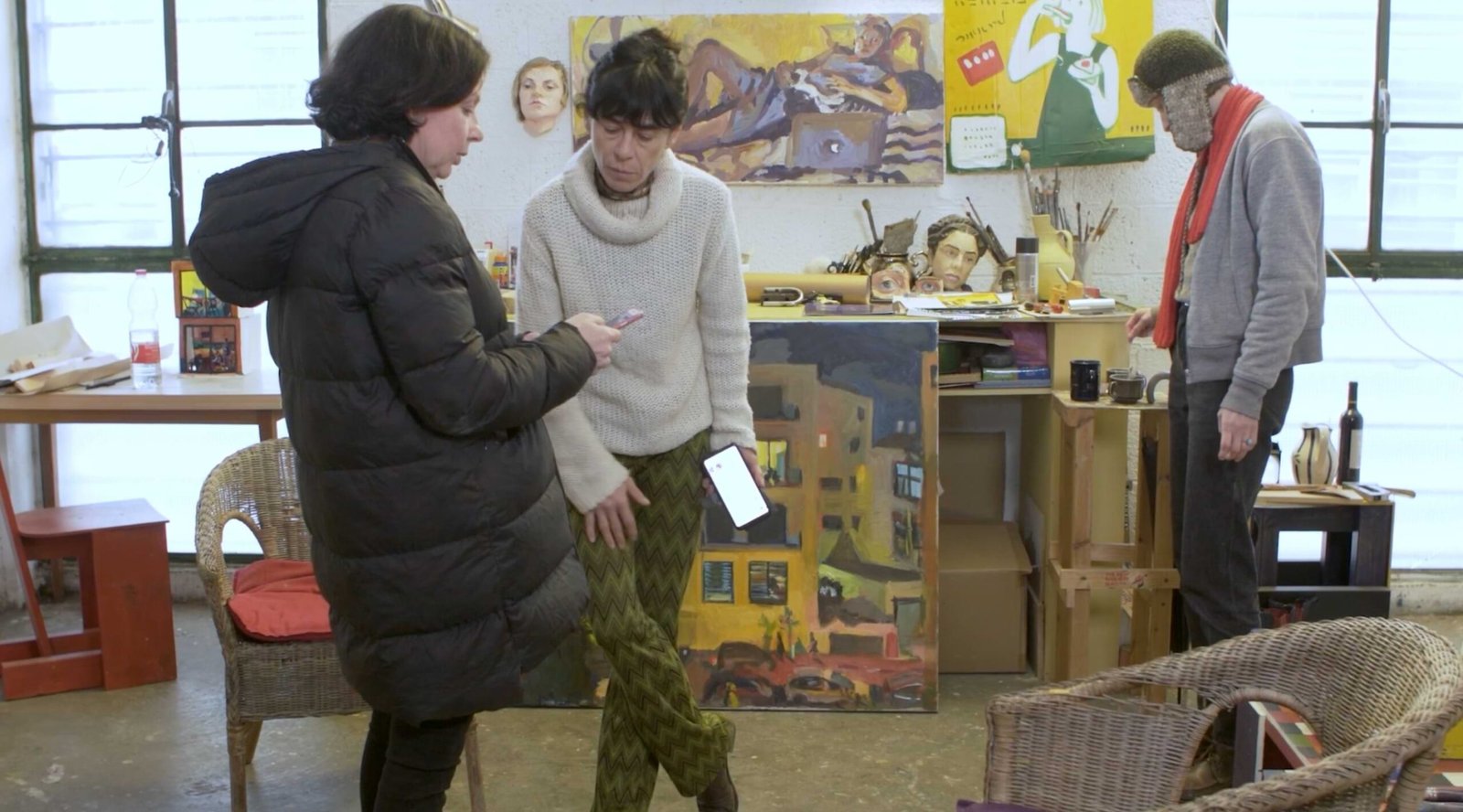The New Barbizon
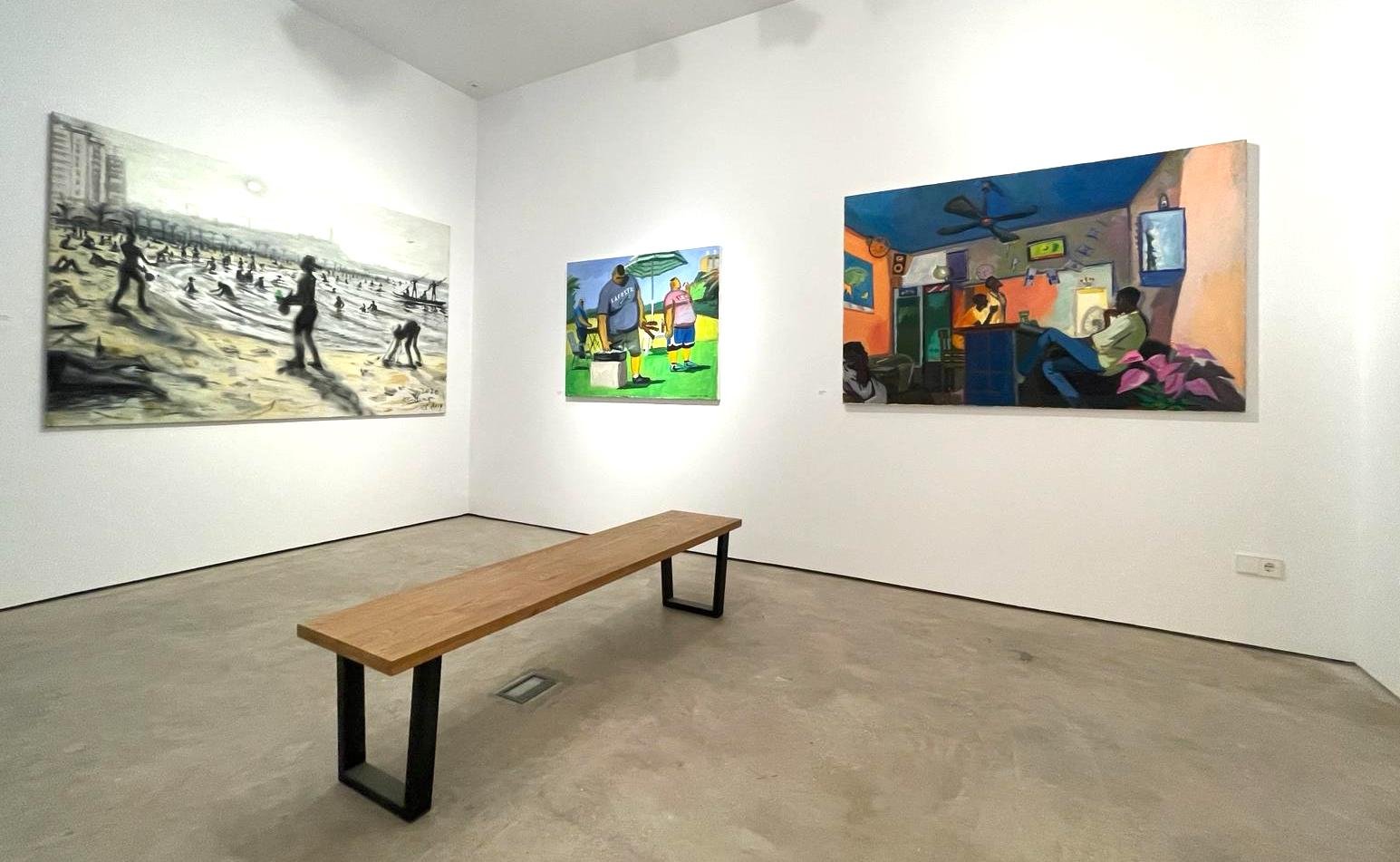
Location and Working Hours
Bárbara de Braganza 9, Madrid. Open daily 11:00-19:00 Monday and Sunday ClosedArtists
Anna Lukashevsky, Olga Kundina, Zoya Cherkassky, Natalia Zourabova, Maria Pomiansky.The New Barbizon
New Barbizon is a collective of five women artists from Russia and Ukraine who, after emigrating to Israel in the 1990s, decided to leave their studios and paint the world around them. The name alludes to the 19th century Barbizon school—the first to paint outdoors—but the New Barbizon is not a sequel; its members have adopted an old practice to create their own language.
By leaving the studio and facing nature, the old Barbizon school created one of the most radical ruptures in the history of Western art. Why hadn’t anyone gone to paint outside before? Painters might make sketches outdoors but were unable to carry easels or jars of paint until the portable easel and paint in tubes were invented. According to Renoir, without colors in tubes, there would be no Cézanne, no Monet, no Pissarro, and no impressionism. The direct observation of reality not only exposed these painters to the chromatic richness of nature and shades of light, but also revealed new subject matter to them. Jean-François Millet saw three poor peasants and portrayed them as he saw them, bent over from the exhaustion of the day’s work. It was the first time that poverty was portrayed, not in a humorous or deformed way like with Brueghel, nor heroic as with Delacroix, but as human beings whose greatest victory was their endurance of everyday life. New Barbizon knew that by facing the world outside, society would become part of their works. And that’s what they wanted. For these women, art should depict social tensions silenced in daily life. Long before becoming New Barbizon, these five artists grew up studying socialist realism and admiring the works of Iliá Repin, the painter and sculptor who inserted a psychological and social dimension into realism, which the official art of the Soviet Union suggested imitating.
New Barbizon followed the path of the French artists, but they did not encounter forests and rivers, but instead cities steeped in history, with a Middle Eastern blend in an unstable balance; with social, racial, and religious conflicts that became the raw material of their works. Painting outdoors forced them to do so quickly. They didn’t have time to include every detail; they had to capture the essence of reality, and for this they used a dual perception: they highlighted people’s authenticity and, avoiding stereotypes, reflected their distinctive traits, what makes them unique. It’s a fine line that can become the same as what one has criticized when one fails to cross it.
Unlike the old Barbizon, the women of New Barbizon have all the currents of figurative art that came after the Frenchmen at their disposal. Their works contain impressionism and post-impressionism, Fauvism, expressionism and cubism, socialist realism, graphic design, comic art, theater, pop-art and punk. They blend styles, not in a collage but in a new language full of references to the past. They obtain the freedom to combine styles from postmodern art but reject its self-reference. They don’t want to create works that speak of art, nor ones that requires explanatory texts to unravel their meaning, but rather works that allow interpreting their world and through which we can perceive the pain and beauty that a city, a room or a face possesses just by looking at them.
Forming a collective in a time that promotes individual genius allowed them to share their experiences. They learned from the visits they made to each other’s studios, where they would talk or sit down to watch the movements that the other made. According to Zoya Cherkassky, when you work alone you have this danger of falling into your own cliches, like repeating yourself, and then when you have other painters that you love and respect, you sort of learn from them. They joined together with a single premise: to leave the studio, face reality and paint. For Olga Kundina, what happened next was a miracle, as if they had rediscovered the power of painting in their lives. Natalia Zouravoba says that they became addicted to painting outdoors. For Anna Lukashevsky, this simple anachronistic gesture allowed them to recover a social responsibility that contemporary painting had lost. The idea was to observe everyday life in the city, with its friction and violence, and to represent that reality on the canvas using all the possibilities that Western art had experimented with.
The artists of New Barbizon have been exploring together, and individually, for over a decade, seeking different ways to capture what they see before them. Rupturists even with their own principles, as if the destination were the quest. Today each of them maintains certain foundations of New Barbizon and betrays others.
Zoya Cherkassky
Zoya Cherkassky continues to obtain her raw material from what she finds outside her studio, but no longer paints her canvases outdoors. Instead, she makes sketches that she then uses in the studio, with all the time she needs. If reality doesn’t give her the composition she needs, the social criticism she wants to make or the sarcasm she wants to convey, then she takes a figure from one sketch and one from another until she recreates a scene that, in her words, “improves reality.”
Her sketches combine the esthetic of a comic or of a soviet school manual with the synthesis of proto cubists during their investigation of African masks. The cubist synthesis is softened in her paintings, but she maintains the political charge and, of course, the sarcasm. Not because art must be sarcastic, but because Cherkassky is.
Anna Lukashevsky
Anna Lukashevsky is perhaps the most loyal to these principles. For her, they fit with her temperament and resolve certain artistic problems —what to paint or how to paint it— and in her words, they get her out of the need “to read Gilles Deleuze.” Direct observation is her best ally. She prefers to paint portraits of people rather than landscapes, because the similar composition that faces have allow her to focus on the psychology of those she portrays.
Lukashevsky combines precise doses of the psychological dimension of the people she portrays with their stereotypical elements so we can situate them socially (a Russian cashier, a Palestinian barber, an Ethiopian refugee). She obtains her models from the exterior, from people she meets on her way: salaried workers, crazy retirees, artists, junkies, punks and hippies. Lukashevsky talks to them as she paints their portraits; she wants to know what they feel, what each wrinkle, each facial expression they make, means. She likes to paint people who “do not wear masks (like the bourgeois) and who let you see the drama, drugs or alcohol, the madness in their faces.”
Olga Kundina
Olga Kundina has always painted what she sees since she was a child. While other children painted from their imagination, she would paint what moved her. That’s why, the very night she met with Cherkassky to talk about painting outdoors together, Kundina proposed starting right away and, without wasting any more time, they got their sketchbooks and pencils out and depicted what they saw before them. The characters in Kundina’s works are reminiscent of expressionism, but the vibration of her urban spaces has overtones of futurism. While she rejects painting from photographs and maintains direct observation, over the years she has gone from portraying the outside world to observing a closer and more intimate world with the aim of reflecting her internal reality on the canvas. She suspects that the next step will be to integrate abstraction.
Natalia Zourabova
Natalia Zourabova continues to work from what she observes around her but is now more concerned about portraying a critical realism than about representing the depth of the space, light and shadows. In her words, this is to “create the possibility of traveling within the canvas, like Cézanne did.” Her works reveal both the influence of post-impressionism, especially in the use of color, as well as her studies of theater and performance art. Zourabova paints real situations but instead of focusing on people’s psychology, she does so on the situation they are experiencing, as if they were characters from a scene frozen in time. Zourabova’s works capture the inexpressible meaning of a common act whose beauty we had overlooked.
Maria Pomiansky
Maria Pomiansky was the last to join the collective, easily and happily adopting the idea of painting outdoors. She is a chronicler who expresses herself in colors and attempts to understand the world –or, in other words, herself– through what she records. However, unlike the rest of the group, her attention is not focused on people but on the spaces those people occupy. Her works are portraits of the faces of cities and, more lately, of other artists’ studios. Because she lives in Switzerland and not in Israel, instead of the restless Middle Eastern disorder, clean spaces predominate in her paintings, where geometric forms come to the fore and create a colorful psychedelic cubist effect.
